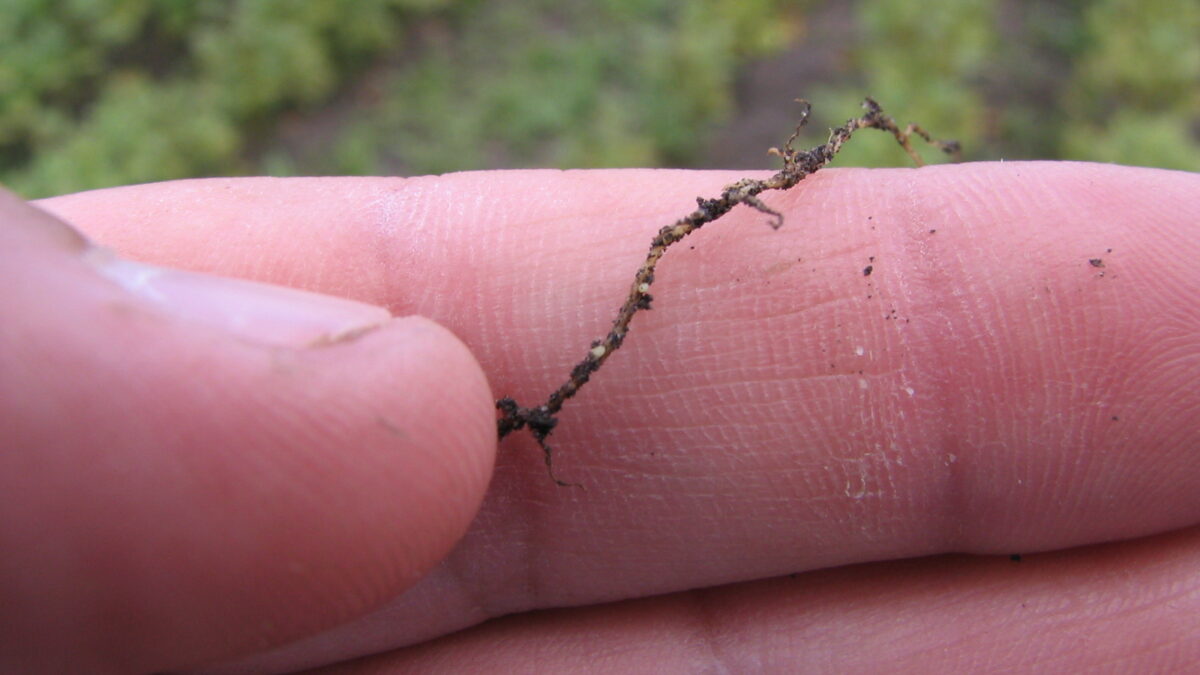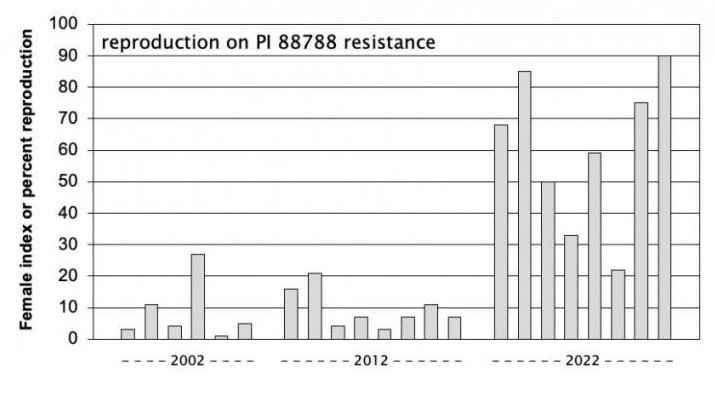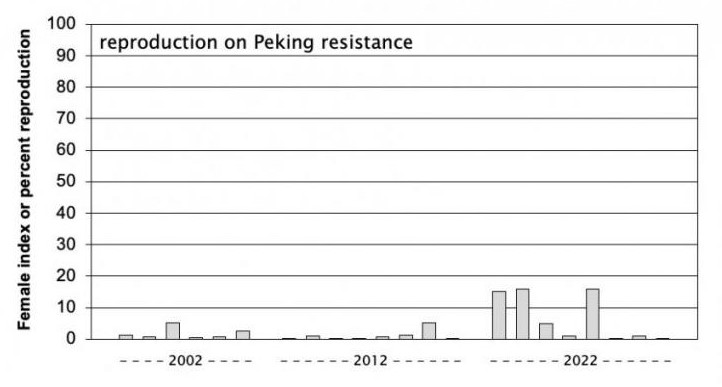Crop Rotation Key in the Fight Against Soybean Cyst Nematode


https://crops.extension.iastate.edu/cropnews/2022/10/high-reproduction-scn-populations-pi-88788-resistance-frightening
On the bright note, soybean cyst nematode is not the end of the world. Growers in Iowa have been successful for over 20 years by implementing sampling and rotation. By changing their source of resistance along with crop rotation, they have done an excellent job of reducing SCN levels.
Incorporating rotation is vitally important in the fight against SCN and is something we need to learn from Iowa. In my mind, our area’s knowledge and management is 15 years behind them.
Notice how in a 20-year span, Iowa has gone from less than 10% reproduction on 88788 to almost 70%. This is what we want to avoid.
Currently, Peking resistance in Iowa has similar reproduction to what 88788 was in the early 2000s. This does not mean Peking is better than 88788; it is reflective of there being fewer Peking varieties up until recently. Until now, 97% of resistant soybean varieties were 88788.
By starting right now, we can preserve both sources of resistance. Rotating genes and crops will drive numbers down. One thing we cannot do is to ignore the issue as if it doesn’t exist here. Each of
us needs to sample our fields and understand our population levels.

As you can see, Peking still shows relatively low percent reproduction rates. The best way for us to protect and maintain these low numbers is to rotate sources of resistance.
For those wanting to take a deep dive and try to understand HG types, the different races and % female indexes, I recommend the SCN Coalition website. To me, it is the best place for SCN resources, links, and contact information for the US and Canada.











